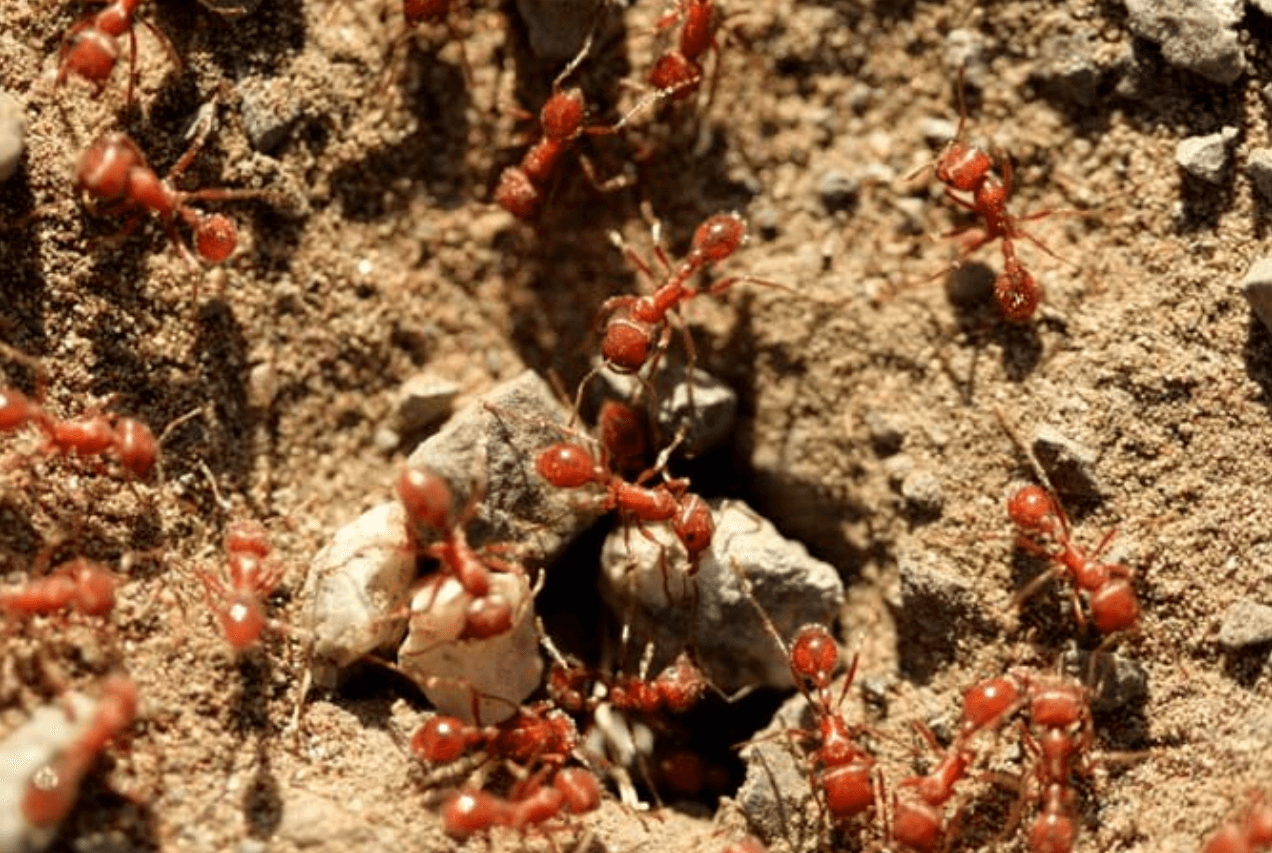One major nemesis to outdoor summer fun: fire ants. Infamous for their painful, burning stings, these pests can ruin outdoor time like no one's business. Two types of fire ants are found in Florida: the native fire ant (Solenopsis geminata) and the infamous Red Imported Fire Ant (Solenopsis invicta). The native fire ant is far less common. The notorious Red Imported Fire Ant, or RIFA, is not native to the United States but can be found in several states including Florida.
Fun Fact: The last part of the RIFA's (Solenopsis invicta) scientific name "invicta" is latin for "unconquered".
A closer look at an invasive Red Imported Fire Ant (Solenopsis invicta) colony
Origins of the RIFA
The RIFA is an invasive species in the United States. These omniviorous ants are native to central South America - so how did they get here? The RIFA unknowingly entered the U.S. via cargo ships from Brazil into the port of Mobile, AL in the early 1900s. It is believed that fire ants were in the soil being used as the ships' ballasts. Since their arrival in the southern U.S. the RIFA has shown strong resistance to federal quarantine measures. They have rapidly spread and now occupy about 300 million acres across the United States, ranging from as far west as California to as north as Virginia.
Agricultural & Enivronmental Impacts of the RIFA
There are negative agricultural and environmental impacts that the RIFA has due to it being an aggressive invasive species. Fire ants can infest farmer's fields, with large infestations having the potential to significantly decrease crop yield. These hostile insects can pose serious health-threats to livestock as well. Environmentally, the presence of the RIFA in certain habitats has the potential to drive out populations of ground-nesting animals.
Did you know? Fire ants both bite and sting - they bite onto skin with their mandibles to stabilize themselves, and then they pierce the skin with their stinger, injecting their 95% alkaloid venom into their victim.
Impacts of the RIFA on Humans
According to the U.S. Deptartment of Agriculture, fire ants cost approximately $6 billion annually in damages and control measures. Not only are these a financial pest to humans, they can pose threats to health as well. When a colony is disturbed, they will rush to attack and repeatedly sting. The RIFA's venom can cause a range of reactions in humans, from mild stinging discomfort, to an allergic reaction as serious as anaphylaxis. In non-serious cases for at-home treatments, the use of antihistamine creams and pills are recommended. If you're having a fire ant frenzy on your property, Sandpiper Pest Control would be happy to come out and provide a free estimate. Our Top Choice treatment guarantees no fire ants for 1 year.
References:
“Imported Fire Ant Regulated Nurseries.” Imported Fire Ant Regulated Nurseries / Plants and Nurseries / Agriculture Industry / Home - Florida Department of Agriculture & Consumer Services, FDACS, https://www.fdacs.gov/Agriculture-Industry/Plants-and-Nurseries/Imported-Fire-Ant-Regulated-Nurseries.
Chung, Posted by Mina, et al. “Don't Let Fire Ants Ruin Your Outdoor Plans!” USDA, 29 July 2021, https://www.usda.gov/media/blog/2019/05/03/dont-let-fire-ants-ruin-your-outdoor-plans.
O'Connor, Rick. “Six Rivers Dirty Dozen Invasive Species of the Month – Red Imported Fire Ant.” Panhandle Outdoors, University of Florida IFAS Extension, 2 Dec. 2021, https://nwdistrict.ifas.ufl.edu/nat/2021/12/02/six-rivers-dirty-dozen-invasive-species-of-the-month-red-imported-fire-ant/.


